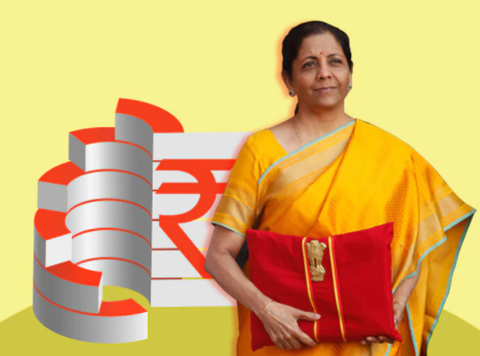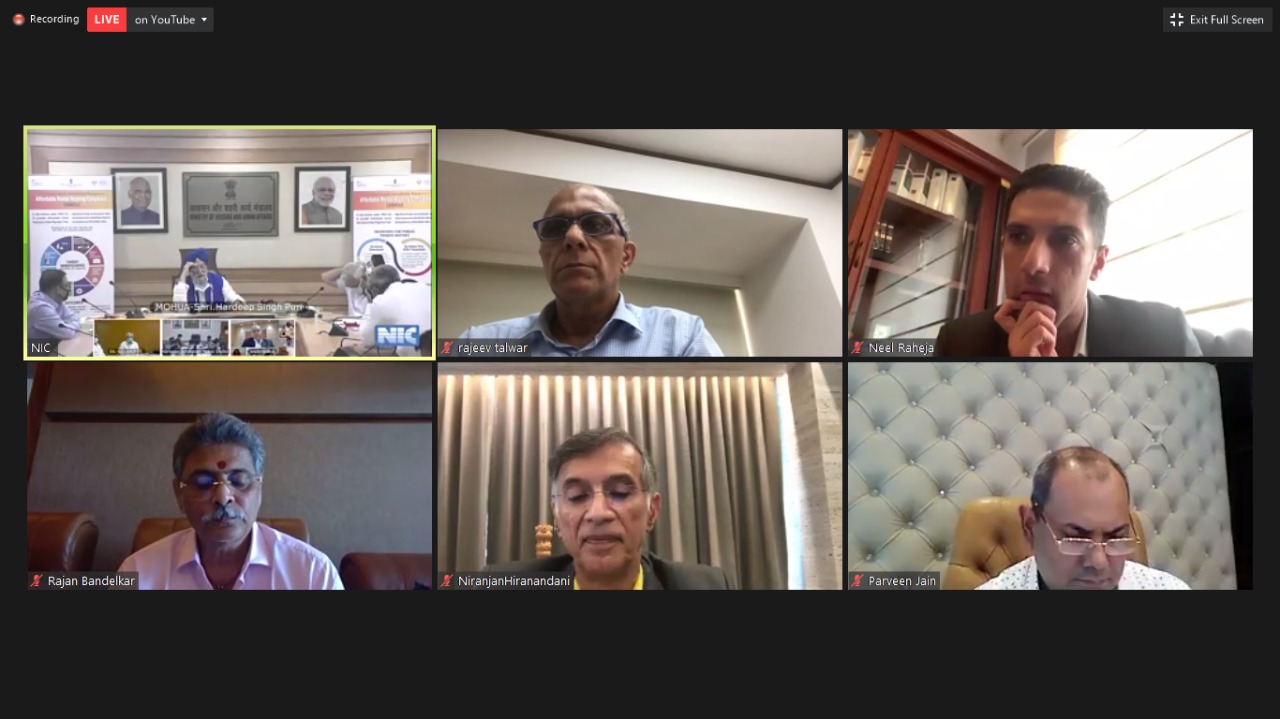Bytes
Exclusive Interview of Dr Nandita Chatterjee, IAS, Secretary, HUPA




(Palash Roy) Hope, you have settled in the ministry! What is the roadmap that you have set for yourself?
(Dr. Nandita Chatterjee) Yes! I have been working in this ministry now for two months. However, I have the experience of working in the area of urban development as well as slum development and poverty alleviation for nearly eight years in the state cadre. Working in HUPA provides the comfort level that is associated with one’s domain area.
At present there are two flagship programmes of this ministry -‘Housing for All by 2022’, and National Urban Livelihood Mission (NULM). The
roadmap for launching the ‘Housing for All’ as well as preparing its guidelines are in progress. Regarding NULM, specific systems are being put
up for expediting and monitoring performance. Apart from that, timelines have been firmed for policy-making on affordable housing, rental
housing,Model Tenancy Acta and NUHHP 2017.
• ‘Housing for All by 2022’ is one of the top priorities of this Government and we all are working for that purpose. After extensive consultations with different stakeholders, our ministry has prepared a new mission for achieving ‘Housing for All by 2022’ in urban areas.
• The Central Government will facilitate ‘Housing for all’ by providing financial assistance to state governments and cities making suitable policy changes required at the Central-level and also advocating policy changes required at state and city government-level.
• The Government of India will ask for action plan from state governments. The states are free to make their own plans according to their priorities, land usage, availability of land and their linkages with the public and the private sector. We will fund according to our commitments.
• The Central Government would be suggesting a set of reforms as part of conditionalities in our mission to facilitate availability of land for affordable housing…We are also planning to encourage optimum utilisation of land by encouraging the states to look beyond existing planning norms and allow more FAR/FSI.
(PR).There are no specific plans spelt out on how the Government will achieve its vision of ‘Housing for All by 2022’. What is the plan of action for the same?
NC. Housing for All by 2022′ is one of the top priorities of this Government and we all are working for that purpose. After extensive consultations with different stakeholders, namely state governments, private sector, community-based organisations working in this field,financial institutions and intermediaries, regulators such as NHB and different ministries of the Central Government, our ministry has prepared a new mission for achieving ‘Housing for All by 2022’ in urban areas. The competent authority has already approved the new Mission except that some details are being fine-tuned. I am sure, we would be able to finalise the mission guidelines very soon.
Our attempt has been to put in a set of building blocks as part of the Mission to enable different state governments and city governments in
achieving the objectives of ‘Housing for All by 2022’. We intend to provide flexibility to states and cities so that they can choose an option best
suited to them. We have learned from our experience and have kept the design of the scheme simple and flexible. Our counterpart in the Rural Ministry is also working towards ‘Housing for All’ in rural areas.
It is also to be noted that land, urbanisation and provision of housing are State subjects and the role of the Central Government is more of a
facilitator. Accordingly, the Central Government will facilitate ‘Housing for all’ by providing financial assistance to state governments and
cities making suitable policy changes required at the Central level and also advocating policy changes required at state and city government level.
The task is significant and contribution of all stakeholders as a team is necessary to achieve this objective.
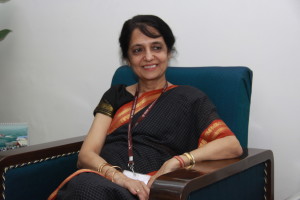

NC.Hopefully, in another one or two months or may be a month more than that. The plan has got in principle approval of the Government. There are some fine-tunings of its components which is under progress. We are trying to reach a closure and once we reach that, we will simultaneously prepare and circulate the guidelines.
(PR). Can you throw some light on how will you work towards ‘Housing for All’?
NC. ‘Housing for All’ will have four pillars. The first pillar is we are looking at in-situ slum redevelopment. The rest of the land, whether it is private, public, public authority or whichever institution, they will be encouraged by the state governments, with relaxation in FSI, FAR, etc. to develop.
The second pillar is affordable housing. This means state governments, local authorities, and urban local bodies will make land available to
public or the private sector. A certain portion of that will be kept reserved for the Economically Weaker Sections (EWS). The developers are free
to develop the rest.
Under the third pillar, the beneficiary can himself or herself lead the construction with an upfront subsidy from the Government. The fourth is that the Government gives an upfront subsidy where a beneficiary wants to take a loan, thereby reducing the EMI. So these are the four pillars.
The Government of India will ask for action plan from state governments. The states are free to make their own plans according to their priorities,
land usage, availability of land and their linkages with the public and the private sector. We will fund according to our commitments.
(PR).Does the Government have sufficient landbank to take care of the housing shortage? Any specific plans for optimum land utilisation?
NC. The provision of adequate urban land for housing is in the domain of state governments since land is a State Subject. Therefore, the responsibility to either provide sufficient land or facilitate provision of sufficient land for housing is with state and city governments.
The Central Government would be suggesting a set of reforms as part of conditionalities in our mission to facilitate availability of land for
affordable housing. Steps like earmarking of adequate land for affordable housing in Master Plan, adopting innovative concept like land
pooling for creating land banks, administrative and regulatory procedures for enabling faster conversion into residential land etc. have already
been taken by some of the states.
We are also planning to encourage optimum utilisation of land by encouraging the states to look beyond existing planning norms and allow
more FAR/FSI and density norms on a par with other developing and developed countries. Higher FAR/FSI, however, would also require
commensurate upgradation of civic infrastructure so that it can satisfy the needs of larger population in a given area.
We are trying to create synergy with the National Urban Renewal Mission of our sister ministry, i.e. the Ministry of Urban Development, for
strengthening the city infrastructure. We are also considering using land as a resource for in-situ rehabilitation of existing slums so that slum
dwellers don’t move out to move faraway places because of established livelihood linkages.


NC.The impact of the Bi II would be across the sectors and, I am sure, the economy will recalibrate itself accordingly and adjust. Overall I don’t see it as a roadblock. Rather, it is felt that it will prompt and enable city and state governments to innovate in the field of urban land and create a win-win situation for all.
(PR). The Union Cabinet has given nod to the Real Estate Regulation and Development Bill. By when shall we expect the Regulator to be in place?
NC. The Bill needs to be passed by Parliament and then the President’s assent is required. Once these happen, we will issue the notification.
Once the notification gets issued, then there will be specific guidelines during which the state governments will be requested to set up the
regulator.
(PR). Which are the top three states in terms of creating low-cost housing? And which are the worst three?
NC. It is difficult to categorise states into best or worst performers. I would like to put in this way that all states are trying to create affordable housing. States are at different stages of urbanisation and hence urban governance and available capacities vary. We had mixed responses under our existing schemes. Typically southern and western states performed better under our existing schemes. May be, it is something to do with higher urbanisation in these states.
(PR). Real estate players have been demanding industry status and infrastructure status for long. Are you advocating their cause?
NC. We are constantly pursuing this with the Finance Ministry, which has not yet come up with any positive response. But we are constantly persuading it.
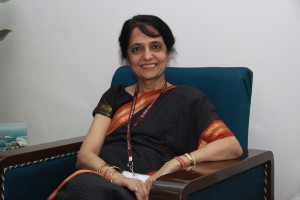

NC.You may be aware that a committee had been set up on streamlining approval process for real estate projects. Its recommendations have been circulated to the concerned ministries. The ministry has been constantly pursuing with the line ministries and the state governments in this matter. Ministries such as Environment and Forests, Culture and Urban Development have already started responding to the request of HUPA on delegation of approvals.
The Minister (HUPA) has also written to the Chief Ministers for introducing a single-window system in each state. He has also drawn attention to the Bureau of Indian Standards and the National Building Code. So I think, with our pursuation this will happen shortly
(PR). Environmental issues are a major bottleneck that the developers are facing. Are you taking any steps to address this?
NC. As stated earlier, the Ministry of Environment of Forests is considering the proposal of delegating the process of issue of NOC depending on the area of the project. It is in constant touch with the Ministry of Urban Development and HUPA in this regard.
• The impact of the (Land Acquisition)Bill would be across the sectors and, I am sure, the economy will recalibrate itself accordingly and adjust. Overall I don’t see it as a roadblock.
• It is difficult to categorise states into best or worst performers. I would like to put in this way that all states are trying to create affordable housing. States are at different stages of urbanisation and hence urban governance and available capacities vary.
(PR).Is the Government taking any steps towards technology up gradation, which will reduce the construction time and, thereby the cost?
NC. The Government is taking many steps towards technology up gradation in this sector to promote modern and innovative construction
technologies, green and environment-friendly building material so that not only we reduce the construction time and save cost but also
promote sustainable development.
As part of our mission, we are also considering a technology sub-mission wherein we will involve willing IITs, NITs other technical institutions,
architectural institutions in addition to our own BMTPC, Hudco and HPL etc. Our attempts would be to work with these institutions and
state Governments to examine and shortlist available modern and innovative technologies and material suitable for different climatic zones.
We would also like to handhold state/cities to ground this innovative technologies. We will also work with professional institutions working in architecture and design to create efficient and environment-friendly designs suitable to local climatic and aesthetic needs. In fact, tech upgradation is going to be one of our major facilitations to states and cities.
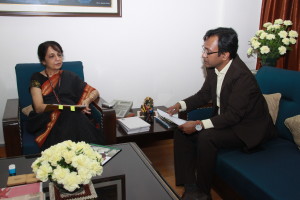

NC.Hudco achieved MOU targets of 2014-15 with ‘Excellent’ rating and the major highlights of its performance are: Sanction of loans: As against the annual target of Rs 161 00 crore, Hudco has achieved Rs 21 094 crore – out of which Rs 7,670 crore achieved for housing and Rs 13,424 crore achieved for urban infrastructure, as stipulated in the MoU. Disbursement of Loans: As against the target of Rs 300 crore, Hudco has achieved Rs 81 00 crore. Against the target of Rs 4.23 lakh number of housing units under affordable housing, including EWS/LIG, Hudco achieved Rs 4.86 lakh units. On financial parameters also it has exceeded targets. NPAs have also come down substantially. Notably, Hudco achieved two of its internal “Mission Five Ones”, viz. Rs 1 Lakh crore cumulative disbursements and 100 ULBs to be assisted per annum. Hudco also achieved ‘Excellent’ status for CSR Operations and HR-related indicators etc.
• The Minister (HUPA) has also written to the chief ministers for introducing a single-window system in each state. He has also drawn attention to the Bureau of Indian Standards and the National Building Code. So I think, with our pursuation this will happen shortly.
• We will also work with professional institutions working in architecture and design to create efficient and environment-friendly designs suitable to local climatic and aesthetic needs. In fact, tech upgradation is going to be one of our major facilitations to states and cities.
(PR). Lastly, what are the specific targets that you have set for yourself?
NC.First of all, we will be happy if we seethe Real Estate Regulation and Development Bill receives Presidential assent, so that we are able to notify and start the work in the states. We will be happy if we see all the guidelines for ‘Housing for All’ get notified, and also the state governments submit their plans for action to us even if not all, but most of them.
We will be very happy to see the NULM pick-up, the skill building happens, the placements happens, the shelter homes are built, the self-help groups are formed, the micro-finance flows, and also I will be happy if we see the real estate sector receives the incentives, and it comes forward to invest more and more in the sector.
-



 News3 weeks ago
News3 weeks agoKW Delhi 6 Mall Onboards New Brands
-



 News3 weeks ago
News3 weeks agoManasum Senior Living Launches IKIGAI GOA, A Senior Living Community in North Goa, in collaboration with Prescon Homes
-



 News2 weeks ago
News2 weeks agoGodrej Properties Sells Rs 3k cr+ Homes of Godrej Zenith, Gurugram, within 3 days
-



 News3 weeks ago
News3 weeks agoBridging India Divide: Top 5 Tier- 2 Cities to Focus On
-



 News3 weeks ago
News3 weeks agoCommercial Realty Gets Tech Savvy: Fast Construction, Enhanced Convenience
-



 News3 weeks ago
News3 weeks agoMultipoint Connection – A Definite Boon
-



 News2 weeks ago
News2 weeks agoRBI’s Status Quo on Key Policy Rates to Help Maintain the Real Estate Growth Momentum, Say Industry Stalwarts
-



 News3 weeks ago
News3 weeks agoSacred Cities See a Retail Boom as Spiritual Tourism Surge: CBRE Report









